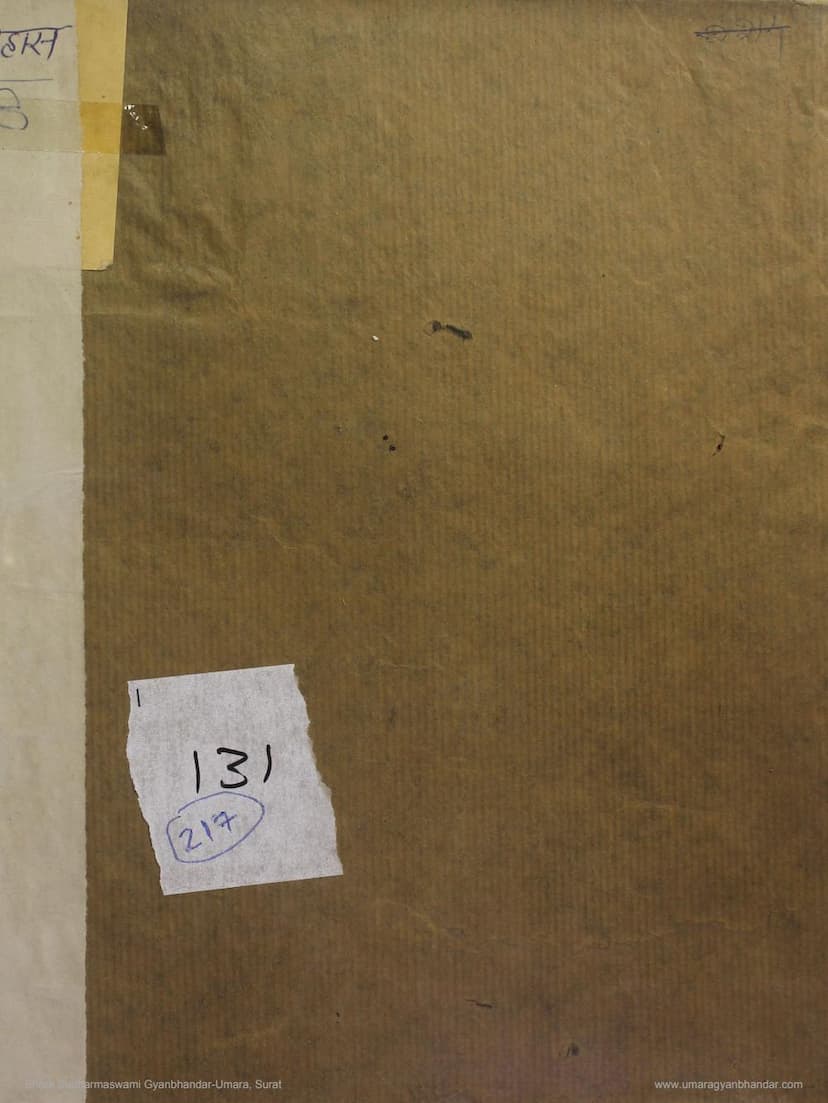Gujaratna Aetihasik Lekho Bhag 02
Added to library: September 1, 2025

Summary
This book, "Gujaratna Aetihasik Lekho Bhag 02" (Historical Inscriptions of Gujarat, Part 2), compiled by Girjashankar Vallabhji Acharya, and published by The Forbes Gujarati Sabha, Bombay, in 1935 (VS 1992), is a significant collection of historical inscriptions from Gujarat. This second volume covers inscriptions from ancient times up to the end of the Vaghela dynasty.
Here's a breakdown of its key aspects:
Objective and Scope:
- The primary goal of this series is to compile and preserve historical inscriptions found in Gujarat.
- Part 2, as indicated in the preface, begins with inscriptions related to the Gurjara dynasty and continues up to the end of the Chalukya (Solanki) dynasty.
- The original intention was to include all inscriptions in this volume, but due to the anticipated size, inscriptions from the Vaghela dynasty and miscellaneous ones were deferred to Part 3. Plans were also underway to collect inscriptions from the Muslim period.
Content and Methodology:
- The book meticulously collects and presents historical inscriptions, providing details such as their content, the dynasty they belong to, the approximate date (in both Vikram Samvat and AD), and their current location.
- The editor, Girjashankar Vallabhji Acharya, a Curator in the Archaeological Section of the Prince of Wales Museum, Bombay, has meticulously organized these inscriptions.
- The inscriptions are presented with their original script (in Gujarati/Devanagari script as provided in the text), along with transliterations (in Sanskritized Gujarati/Devanagari script, often referred to as 'Aksharantar') and, in some cases, translations or explanations.
- The book aims to be a comprehensive resource for understanding the history of Gujarat through epigraphic evidence, covering a broad chronological range from ancient times to the end of the Vaghela rule.
Key Dynasties and Rulers Covered (from the provided pages): The inscriptions primarily focus on the following dynasties and rulers:
- Gurjara Dynasty: Several inscriptions from rulers like Dadda I, Dadda II, Jayabhatta II, and Jayabhatta III are detailed, providing insights into their reigns and administrative practices through copper plate grants.
- Rastrakuta Dynasty: Inscriptions from rulers like Karka II, Govinda III, Indra III, and Dhruva II are included, shedding light on their rule in Gujarat and their interactions with other dynasties.
- Chaulukya (Solanki) Dynasty: A significant portion of the inscriptions covers this prominent dynasty, including those of Mulraj I, Bhimdeva I, Bhimdeva II, Karnadeva, Jayasinhadeva (Siddharaj), and Kumarapala. The detailed descriptions of these inscriptions highlight their grants, inscriptions found in temples and other structures, and offer glimpses into their administrative policies, religious affiliations, and territorial extent.
- Other Rulers/Dynasties: While the primary focus is on the Gurjara, Rastrakuta, and Chalukya dynasties, mentions and inscriptions related to other powers that influenced Gujarat, such as the Gurjaras of Lata, and the activities of rulers like Paramaras, are also discussed within the context of the primary dynasties' inscriptions.
Editorial Approach and Value:
- The editor acknowledges feedback received on Part 1, including criticisms about the compilation being "mechanical" and suggestions for expanding the geographical scope.
- The editor addresses the concern about maintaining a narrative flow in a compilation of inscriptions, stating that the primary goal is chronological arrangement rather than creating a narrative like a novel.
- The book includes detailed discussions about the authenticity of certain inscriptions and addresses queries about the work of the original compiler (Late Ranajitram).
- The inclusion of information about the current location of the inscriptions, where known, is valuable for researchers.
- The prefatory material also discusses the Forbes Gujarati Sabha's initiative to make its publications accessible to educational institutions at half price to promote Gujarati literature.
Significance: This volume serves as a crucial primary source for the study of the political, social, religious, and economic history of Gujarat during the specified periods. By presenting these inscriptions, it allows scholars and enthusiasts to directly engage with the historical records of ancient and medieval Gujarat, providing a foundation for further research and understanding of the region's rich past. The detailed transliterations and explanations are essential for deciphering and interpreting these ancient texts.